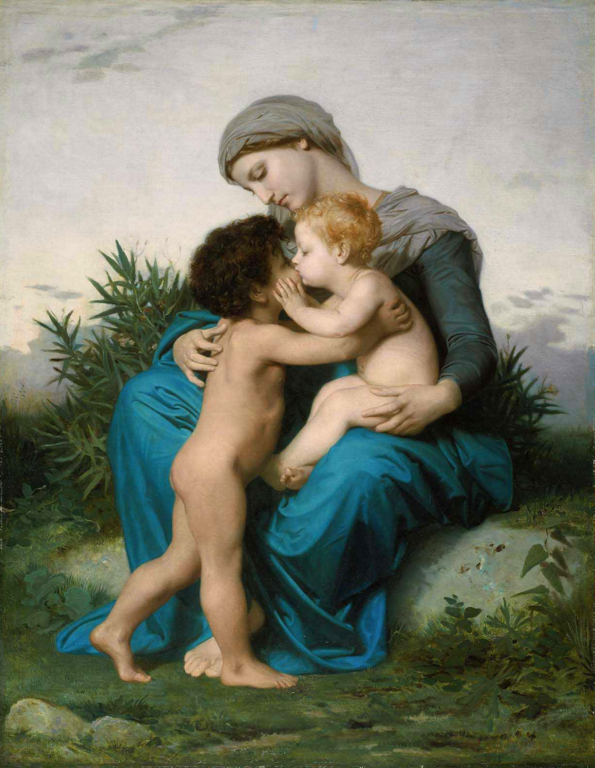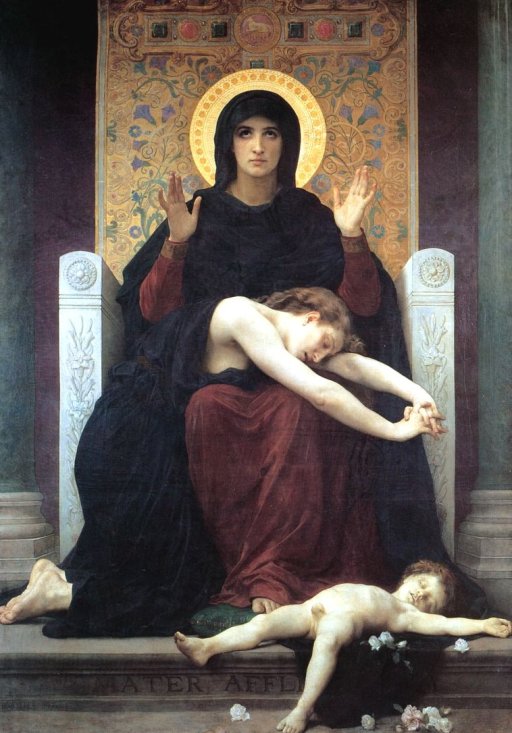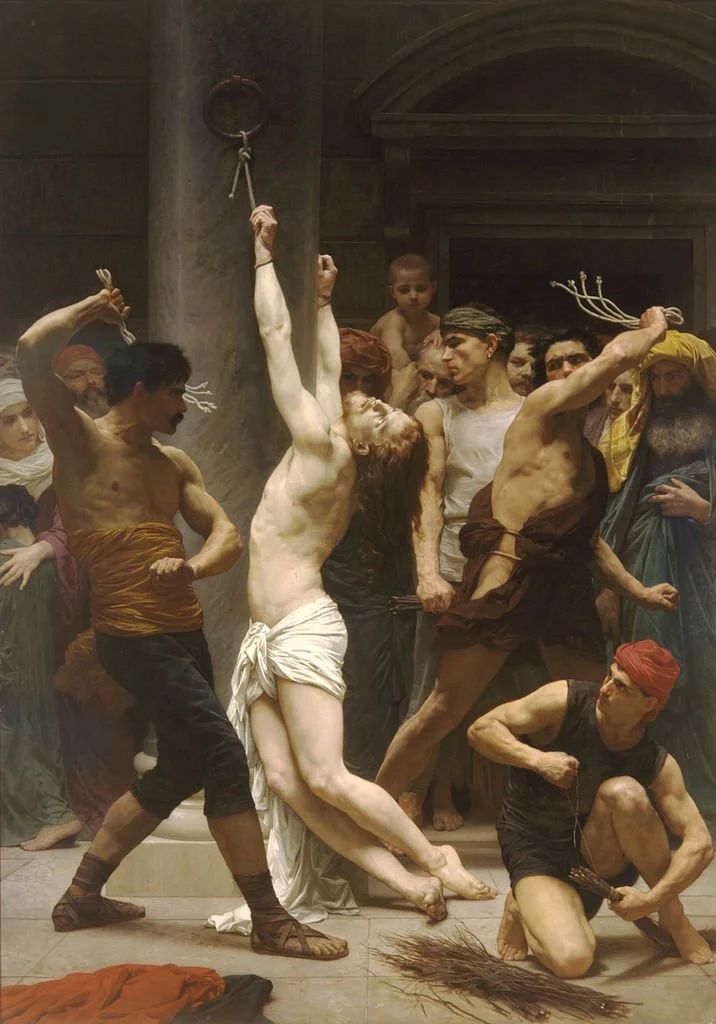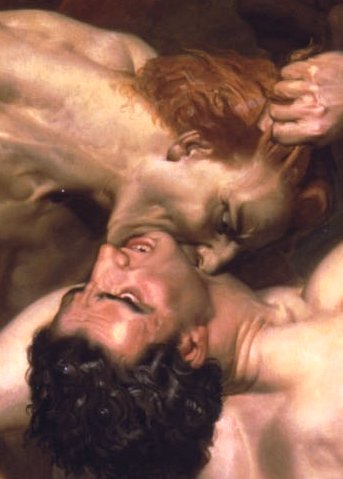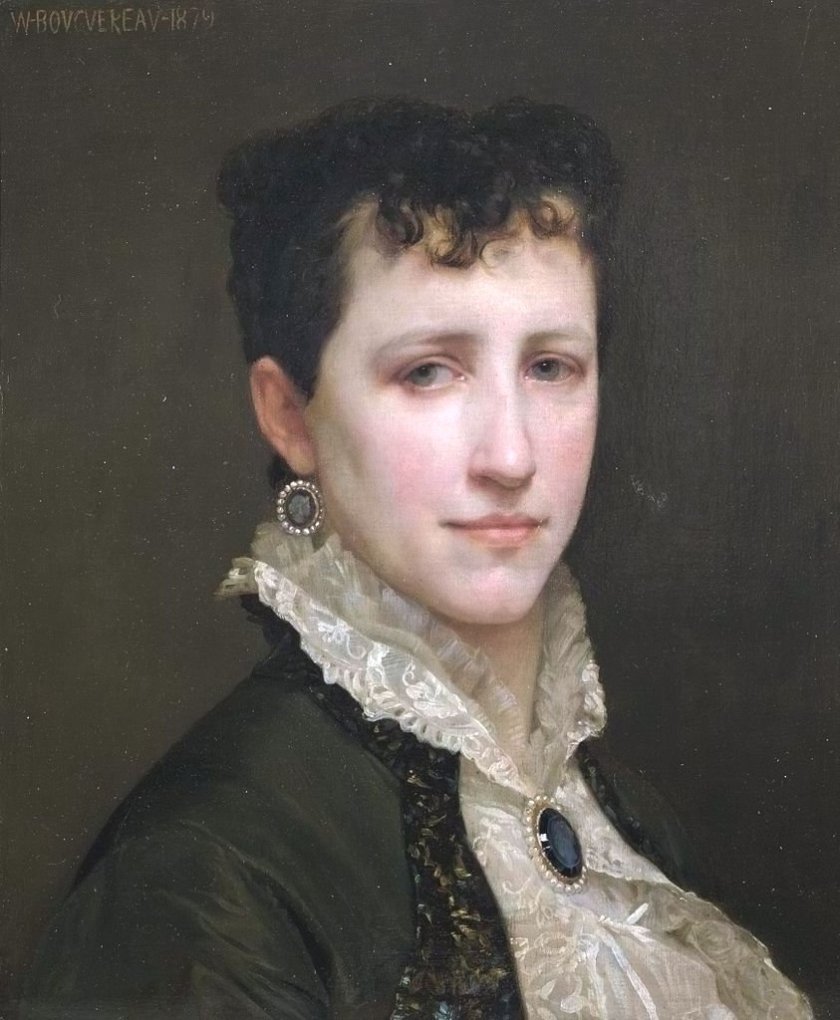
The artist I am looking at today is the American, Elizabeth Jane Gardner. If you read my last blog, which was the conclusion of the life of the French Academic painter William Bouguerau, you will know that Gardner was his second wife. This is not a story about the wife of a famous painter dabbling with art. This is a story about the fighting spirit of an acclaimed painter – a great artist in her own right, although it has to be said that she was often criticised because much of her work resembled her husband’s genre pieces.
Elizabeth Jane Gardner was born in October 1837. Her birthplace was the town of Exeter in the American state of New Hampshire. It was here that she attended junior school. After completing her regular school education in 1853, she attended the Lasell Female Seminary at Auburndale Massachusetts. The college, which was founded in 1851, was named after its founder Edward Lasell, who was a great believer in female education. It was at this college that Elizabeth studied languages and art. She graduated in 1856 and for the next few years was a teacher of French at the newly opened Worcester School of Design and Fine Arts in Massachusetts.
Whilst she had been studying art at the Lasell Seminary she would often question the teaching she received but it dawned on her that the foundation of all good painting stemmed from the ability to master the art of drawing. It was probably during the time spent in her art classes there that she nurtured the desire to one day, go to Europe and live and study art in Paris, which was then, the capital of the art world and the Mecca for all European and American artists. This artistic ambition to savour French life and its art was probably delayed by the American Civil War and her dream was not realised until 1864, when she and her former art teacher at the Lasell Seminary, Imogene Robinson, set sail for France. They got themselves a flat in Paris and that summer obtained licenses as copyists at the Louvre and the Musée du Luxembourg. For the duration of that summer they fulfilled artistic commissions from America by copying paintings in the collection of the prestigious galleries which they also sold to the locals. However Elizabeth’s main reason for coming to Paris was to receive further artistic tuition at one of the prestigious art academies and so in the autumn she applied to enter L’École des Beaux-Arts, the foremost art institution. She was horrified that her application was rejected, not on the grounds of her ability but on the grounds of her sex. L’École des Beaux-Arts, like many art establishments at the time, had a male-only admissions policy and refused to admit females into their hallowed corridors. The banning of women from the L’École des Beaux-Arts was not lifted for another thirty-five years, in 1897.
Whether it was her and her American companion Imogene’s need to fulfil their initial aim for coming to France, to receive tuition from an established artist or whether it was the simple fact that the public art galleries were not heated and copying works of art in the cold establishments became less pleasant, the women gave up their commissioning work and in the winter of 1864 they looked for an artist who would provide them with some tuition. Established artists were happy to nurture and teach aspiring artists provided they could pay. The more the student was willing to pay the better the class of artist who would become their tutor. Elizabeth’s companion Imogene was in a much better financial situation than Elizabeth and was able to secure Thomas Couture as her mentor and tutor whereas Elizabeth who was not as well off settled for a lesser-known painter Jean-Baptiste-Ange Tissier, whose students were mostly women.

Elizabeth Gardner was a resolute and determined character and was not going to be put off by red tape and sexist bureaucracy of the art academies and so devised a plan on how she would gain admission to one of the Parisian art schools. Before she had left the shores of America, she had been ill and had lost a lot of weight and had had to have her hair cropped short. Her figure had taken on a boyish appearance which part facilitated her ingenious plan. She decided to pose as a young lad but for a woman to walk the streets of Paris dressed as a male she had to have permission from the Paris Police Department! The law was passed on November 17th 1800 when Paris city chiefs had placed the order on the statute books that required women to seek permission from the police if they wanted to “dress like a man.” The order was issued at the end of the French Revolution when working-class Parisian women were demanding the right to wear pants in their fight for equal rights. Parisian women activists, during the Revolution, had also requested the right to wear trousers as a political gesture and like their male working-class revolutionaries became known as “sans-culottes” for wearing trousers instead of the silk-knee breeches preferred by the bourgeoisie. It was modified in 1892 and 1909 to allow women to wear trousers if they were “holding a bicycle handlebar or the reins of a horse”. Such an old fashioned law! Actually not, for it was only in January 2013 that the French Minister of Women’s Rights, Najat Vallaud-Belkacem, said that the ban was incompatible with modern French values and laws and although it had been ignored for many years it was only right that the law was officially repealed and so French officials invalidated the 213-year-old order that forbade women in Paris to dress like men and wear trousers. The French government had been opposed to women wearing trousers for it was a simple method of preventing women, who dressed as men, from gaining access to certain offices or occupations which were male-only domains.

Elizabeth’s plan worked, for in 1865, she successfully applied to the drawing school of the prestigious Gobelin Tapestry factory which was best known as a royal factory supplying the court of Louis XIV and later monarchs. At the beginning she was accepted as a young lad but after a while her fellow students and instructors realised that she was actually a young woman. Whether it was because of her outstanding drawing ability or her determined personality, one may never know, but despite the discovery of her sex, she was allowed to stay.

One person, who was also impressed with her ability and strength of mind, was Rodolphe Julian. He had established the Académie Julian in 1868 as a private studio, a school for art students. The Académie Julian was a kind of feeder school for art students who wanted to later gain admission to the École des Beaux-Arts as well as offering independent training in arts. At that time, women were not allowed to enrol for study at the École des Beaux-Arts, but this new Académie Julian accepted both men and women, albeit they were trained separately, but most importantly, women participated in the same studies as men, which included access to classes which taught the basis of art – drawing and painting of nude models. The Académie Julian was particularly popular with aspiring American artists for it did not have an admission’s precursor of having to be able to speak French.
Whether it was beginners luck or just the fact that she had become a successful and talented artist but in 1868 she had two of her painting accepted by the Salon jury. To have a painting exhibited at the Salon was a great moment in the life of an aspiring painter. It was not just in recognition of their talent but it enhanced the value of their future works. Elizabeth was delighted and wrote home to her parents:
“…when the ex’n opened both of mine were hung in full view among foreign artists and raises the value of what I paint…”
Elizabeth Gardner’s works were often found in the annual Salon exhibitions and in the exhibition catalogues she, like many other artists whose works were on show, would often name the well know artists who had taught them. This was an attempt by artists to boost their status and their “artistic bloodline”. It is by looking at these catalogue entries that we know that Elizabeth received tuition from Hugues Merle, a contemporary and friend of Bouguereau from 1868 to 1874. The name of the artist, Jules-Joseph Lefebvre was added in catalogues in 1875 as was the name of William Bouguereau from 1877 onwards.

In 1878 Elizabeth Gardner put forward a religious painting for inclusion at that year’s Salon. It was entitled Moses in the Bulrushes. She had started the work the previous year and was pleased with its progress. In December 1877, she wrote about her progress with the work to her brother, John, who was back home in Exeter, New Hampshire:
“… I have advanced my picture of little Moses a good bit this month. The canvas is now covered and now comes what is to me the hardest part. I have always ideas enough for nice subjects but it is so hard to make the reality come up to the dream. I get sometimes quite frantic over it…”
The work was accepted by the Salon jurists and exhibited in 1878. The Arts critic of the American Register, a newspaper for expatriate Americans living in Paris wrote in the April 6th edition:
“…‘Miss E. J. Gardner has just completed her picture for the Salon, Moses in the Bulrushes. The subject is taken at the moment when Moses has just been placed amongst them, and his sister has parted the bulrushes to watch the approach of Pharaoh’s daughter, who is seen in the distance. The expression of anguish in the mother’s face is especially well rendered, and the coloring is remarkably fine…”
The fact that she had put forward a religious painting for inclusion at the Salon was a brave move as history and religious paintings were looked upon as the highest form of art genre. It was a genre that was also looked upon as being artistically, a male-only domain and female artists were often discouraged from attempting such works. However as we know, Elizabeth Gardner was a strong-minded person and never shied away from controversy if she believed her course of action was right. Her submission of this religious work entitled Moses in the Bullrushes, put her in direct competition with her male counterparts. It was also interesting to note that her take on the event portrayed was from a female perspective. She had depicted the two women, the mother of the baby and the Pharaoh’s daughter, as courageous women who were saving the life of the baby, Moses.
As the sale of her paintings increased with her popularity, so her financial situation improved. Things got even better in the late 1870’s when the renowned Paris art dealer Goupil began purchasing her work and in the 1880’s her work was so much in demand that the prestigious Knoedler art dealership of New York, was buying her Salon paintings, sight unseen. This art dealership had formerly been a subsidiary of the Parisian art dealers, Goupil & Cie.
Elizabeth had reached one of her most sought-after ambitions in 1868 – to have one of her paintings exhibited at the Paris Salon. However Elizabeth was not one to rest on her laurels and her next ambition was not only to have her work hung at the Salon exhibition but that it was deemed worthy of an award. She had to wait another nine years for that happening.
One of Elizabeth Gardner’s artistic mentors was William Bouguereau. Elizabeth and her companion Imogene were living in a flat in rue Nôtre-Dame des Champs in the Montparnasse district of Paris, the same street in which Bouguereau and his family resided. Elizabeth became known to the family and was on friendly terms with Bouguereau’s wife, Marie-Nelly. William Bouguereau and Elizabeth Gardner must have become quite close during this time as, eight months after the tragic death in childbirth of Bouguereau’s wife in April 1877, the grieving widower proposed marriage to Elizabeth. Elizabeth was happy to accept but Bouguereau’s mother and daughter Henriette were horrified. The daughter threatened to leave home and join a convent if a marriage took place but this threat was never tested as Bouguereau’s of the vociferous, sustained and obdurate opposition from his mother to the formalising of the partnership was enough to halt any proposed wedding plans. However the couple became engaged in 1879 and Elizabeth wrote about Bouguereau, their betrothal and her thoughts about his mother. In a letter she wrote:
“…And now about my engagement…. I am very fond of Mr Bougereau and he has given me every proof of his devotion to me. We neither of us wish to be married at present. I have long been accustomed to my freedom. I am beginning to attain a part of the success for which I have been struggling so long. He is ambitious for me as well as I for myself. As it is I can’t help working very much like him. I wish to paint by myself a while longer. He has a fretful mother who is now not young, 78 I think. She is of a peevish, tyrannical disposition and I know she made his first wife much trouble…”
Elizabeth and Bouguereau continued to work together and seemed happy or maybe just resigned, to accept a long drawn out courtship.

The realisation of Elizabeth’s ambition to be awarded a medal at the Salon came in 1887. By this time, the popularity of her work had surged and she had been inundated with commissions but her mind was focused on her Salon entries and in December 1886, she wrote to her brother John of her desire to achieve that ultimate success:
“…I must work to get a medal in Paris and not for money a while longer. All will come right in time I am confident if I work hard and am patient…”
In a letter to her sister Maria in January 1887, she again sounded both resolute and optimistic about her award prospects:
“…I am bound to get a medal some year…”
Finally in 1887 the Salon awarded her a medal (third class) for her work entitled The Farmer’s Daughter. The idea for the painting came to Elizabeth whilst she was on a painting trip in the countryside. Whilst out, the weather turned nasty and a downpour ensued. She took refuge from the rain by sheltering in a farmer’s barn and it was whilst there that she saw the farmer’s daughter feeding the hens and ducks. So impressed by what she saw, she decided to make a quick sketch of the scene which led to the finished prize-winning work. The painting is a depiction of unspoiled rural living and must have been seen as a breath of fresh air in comparison to paintings by the up-and-coming Impressionists depicting city scenes and the onset of modernity. Gardner’s tranquil scene would probably have made many people want to exit the city and sample the peacefulness and serenity of the countryside and was for the owner of such a painting, it was a reminder of how life was in simpler days.
The award she received for her work was the first and only medal that was ever bestowed on an American woman painter at the Paris Salon. She was ecstatic and on May 30th 1887, she wrote to her brother John back in America:
“…My pictures at this year’s Salon have just received the medal which I have waited for so many years. I hasten to write you by the first mail for I know you will All sympathize with me in my happiness. The jury voted me the honor by a very flattering majority – 30 voices out of 40 ….No American woman has ever received a medal here before. You will perhaps think I attach more importance than is reasonable to so small a thing, but it makes such a difference in my position here, all the difference between that of an officer and a private, and I hope it will be a good thing for the sale of my paintings. I made an extravagant risk in my large one this year. Monsieur Bouguereau is very happy at my success. He is as usual President of the Jury, it is his great impartiality which has so long kept him in office. He has always said that I must succeed through my own merit and not by his influence. I hope to send some photos soon….I have nearly a hundred letters of congratulation and dispatches to acknowledge today. I have begun by the dear ones at home…”
This work by Elizabeth was to receive further awards when it was exhibited in the Gallery of the United States at the Paris Exposition Universelle in 1889 where it was awarded a bronze medal. To understand how great an achievement this was, one has to remember she was up against some of the finest American painters such as Thomas Eakins, William Merritt Chase and John Singer Sargent.

The work was exhibited along with another of her works, the somewhat controversial, L’imprudente (The Imprudent Girl).
Elizabeth and William Bouguereau had been courting for seventeen years, unable to marry for fear of crossing Bouguereau’s mother who was adamant that the couple should not marry. However in 1896 his mother died aged 91 and the couple wasted no time in getting married. The colour of Elizabeth’s bridal gown was black and white because, as she explained, although it was her wedding day, she was still in mourning for Bouguereau’s mother. The groom was 71, and the bride 59 years of age. Elizabeth wrote home about their change in circumstances:
“… The old lady died on February 18th at the age of 91. Her devoted son who had borne with such affectionate patience all her peculiarities was quite afflicted by the change [in her health]. He had so long had the habit of subordinating every detail of his life to her desires, of which the first was to rule without opposition in his house…”
After marrying Bouguereau, Elizabeth almost stopped painting altogether and spent most of her time looking after her husband and his studio. When asked why she stopped painting she simply replied:
“…He was alone and needed me. I abandoned the brush…”
She did not resume her painting career until after his death nine years later and it was then that she signed all her works in her married name.
 One other of Elizabeth Gardner’s painting of note was completed just before she married William. It was another religious painting entitled The Shepherd David and was based on a passage from the Old Testament story (1 Samuel 17:34):
One other of Elizabeth Gardner’s painting of note was completed just before she married William. It was another religious painting entitled The Shepherd David and was based on a passage from the Old Testament story (1 Samuel 17:34):
“…And David said unto Saul, “Thy servant kept his father’s sheep, and there came a lion and a bear and took a lamb out of the flock…”
The work depicts David demonstrating his worthiness to fight Goliath when he tells the tale of how he, as a shepherd, battled with wild beasts which were menacing his flock. In the painting Elizabeth has shown the young David kneeling in triumph on a dead lion while at the same time grasping a lamb under his right arm. He looks upward towards the heavens, with his left arm raised in recognition that God had given him the strength to fight off the wild animals. Elizabeth was proud of the painting and wrote to her sister Maria in America that she full expected to see her painting receive full-page coverage as one of the best works of art in 1895 in Goupil’s, the esteemed Parisian art dealers, art directory.
Elizabeth and William worked happily together from their studio in rue Nôtre Dame des Champs and, even at the age of 78, Bouguereau took his new wife to Italy a country he hadn’t visited since 1850 when he had won the Prix de Rome prize and the stay at the Villa Medici. The couple would spend their summers away from the claustrophobic atmosphere of the French capital and return to the calming ambience of his birthplace, La Rochelle. It was here that William Bouguereau died of a heart attack on August 19th 1905, three months short of his eightieth birthday. His body was transported back to Paris and he was buried in the Cimetière de Montparnasse.
Art critics of the time often disapproved of Elizabeth’s painting style, saying that it copied too closely the style of her husband. However Elizabeth was unrepentant and was very proud of her work and in a 1910 interview stated:
“I know I am censured for not more boldly asserting my individuality, but I would rather be known as the best imitator of Bouguereau than be nobody!”
The similarity in style between works painted by her and her husband was probably a financially astute decision as she was well aware that this genre of art, the sentimental secular works, was very popular with the public both in France and even more so in America where clients could not get enough of her and her husband’s art.
Elizabeth Jane Gardner Bouguereau, a native of New Hampshire will be remembered as the feisty young woman who challenged the French art establishment. She was proud to be different and by so doing, signposted the way for many other women to challenge the stranglehold that males had on the world of art. Elizabeth died at her summer residence in St. Cloud, a western suburb of Paris in January 1922 aged 84 and was buried, like her husband William, in the Cimetière de Montparnasse in Paris.
If you are interested in the life and work of Bouguereau and Elizabeth Gardner I do suggest you buy the excellent book, Bouguereau by Fronia E. Wissman, an author who has written or contributed to a number of books about French artists.


